The NBA’s annual deadline for rookie scale contract extensions passed on Monday, officially bringing the extension period for 2020 first-round picks to an end. In total, 14 players eligible for rookie scale extensions signed new contracts this year, blowing away the previous record (11), which was set in 2021 and matched in 2022.
We’ve seen a noticeable uptick in rookie scale extensions in recent years, with at least 10 such deals completed in each of the last four offseasons. Prior to 2020, the last time as many as 10 rookie scale extensions were signed in a single league year was back in 2006, when players like LeBron James, Carmelo Anthony, Dwyane Wade, and Chris Bosh were signing their second NBA contracts.
Here’s a breakdown of the 14 rookie scale extensions signed before this year’s deadline, sorted by total value. In cases where we haven’t yet seen the official contract terms for the extension, we’re basing our figures on the latest reports and will update these numbers as necessary. These deals will go into effect beginning in 2024/25.
Note: Projected values for maximum-salary extensions are based on a 10% annual salary cap increase in 2024. If the cap doesn’t increase by that much, those max extensions won’t be worth as much, since they’re based on a percentage of the cap.
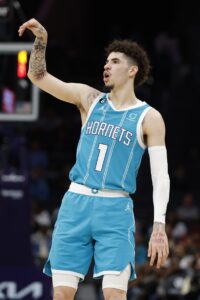 LaMelo Ball (Hornets): Five years, maximum salary (story). Projected value of $216,953,495. Projected value can increase to $260,344,194 if Ball meets Rose Rule criteria. Includes 15% trade kicker. Starts in 2024/25.
LaMelo Ball (Hornets): Five years, maximum salary (story). Projected value of $216,953,495. Projected value can increase to $260,344,194 if Ball meets Rose Rule criteria. Includes 15% trade kicker. Starts in 2024/25.- Anthony Edwards (Timberwolves): Five years, maximum salary (story). Projected value of $216,953,495. Projected value can increase to $260,344,194 if Edwards meets Rose Rule criteria. Includes 15% trade kicker. Starts in 2024/25.
- Tyrese Haliburton (Pacers): Five years, maximum salary (story). Projected value of $216,953,495. Projected value can increase to $260,344,194 if Haliburton meets Rose Rule criteria. Includes 15% trade kicker. Starts in 2024/25.
- Desmond Bane (Grizzlies): Five years, $197,230,450 (story). Includes $8,669,550 in incentives. Includes 15% trade kicker. Starts in 2024/25.
- Devin Vassell (Spurs): Five years, $135,000,000 (story). Includes $11,000,000 in incentives. Starts in 2024/25.
- Jaden McDaniels (Timberwolves): Five years, $131,000,000 (story). Includes $5,000,000 in incentives. Starts in 2024/25.
- Onyeka Okongwu (Hawks): Four years, $62,000,000 (story). Starts in 2024/25.
- Isaiah Stewart (Pistons): Four years, $60,000,000 (story). Includes $4,000,000 in incentives. Includes fourth-year team option. Starts in 2024/25.
- Deni Avdija (Wizards): Four years, $55,000,000 (story). Starts in 2024/25.
- Josh Green (Mavericks): Three years, $41,000,000 (story). Starts in 2024/25.
- Cole Anthony (Magic): Three years, $39,100,000 (story). Includes third-year team option. Starts in 2024/25.
- Aaron Nesmith (Pacers): Three years, $33,000,000 (story). Starts in 2024/25.
- Zeke Nnaji (Nuggets): Four years, $32,000,001 (story). Includes fourth-year player option. Starts in 2024/25.
- Payton Pritchard (Celtics): Four years, $30,000,000 (story). Starts in 2024/25.
A few of these extensions were no-brainers — there was never any doubt that Edwards was going to get maximum-salary offer from the Timberwolves as early as possible, for instance.
After Edwards, Ball, Haliburton, and Bane agreed to terms early in the offseason, a total of 10 more players eventually reached deals of their own, with the contracts for Vassell and McDaniels occupying the next tier below the first four mega-deals. The Spurs sharpshooter and Timberwolves forward will have annual salaries in the range of $26-27MM, which are far above the mid-level but still well below the projected maximum.
The other eight rookie scale extensions signed this year range in average annual value from $7.5MM to $15.5MM, with a handful hovering right around the non-taxpayer mid-level exception. There were a few surprises in the bunch — I would’ve viewed Avdija, Nesmith, and Nnaji as unlikely extension candidates, but their teams decided to lock them up rather than take their chances in restricted free agency a year from now.
In the case of both Nnaji and Pritchard, their team’s cap situation going forward may have played a part. The Nuggets and Celtics could both be above the second tax apron in 2024/25, which would place extreme limitations on their ability to bring in new role players via trade or free agency — that’s probably one reason why they opted to extend an in-house role player now.
Of these deals, Green’s was one that came in lower than I anticipated. Given his three-and-D potential, I thought the Mavericks might have to go up to at least $15-17MM per year over four seasons to lock him up and figured he’d want to exceed Grant Williams‘ four-year, $53MM deal with Dallas. Green’s annual salary ($13.67MM) will come in a little higher than Williams’, but I didn’t expect the Mavs to be able to get that deal done with such a relatively modest overall commitment.
For the first time ever, more than half of the players who were eligible for rookie scale extensions signed them. With 14 players signing extensions, that left 13 players who were eligible for a new deal and didn’t get one.
Here’s that list of those players, who are now eligible to become restricted free agents during the 2024 offseason, assuming they finish their current contracts:
- Precious Achiuwa (Raptors)
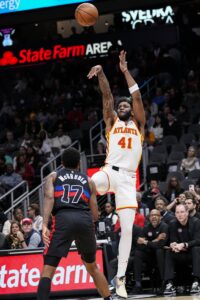
- Saddiq Bey (Hawks)
- Malachi Flynn (Raptors)
- Killian Hayes (Pistons)
- Kira Lewis (Pelicans)
- Tyrese Maxey (Sixers)
- Chuma Okeke (Magic)
- Note: Okeke was a 2019 first-round pick but didn’t sign his rookie scale contract until 2020.
- Isaac Okoro (Cavaliers)
- Aleksej Pokusevski (Thunder)
- Immanuel Quickley (Knicks)
- Obi Toppin (Pacers)
- Patrick Williams (Bulls)
- James Wiseman (Pistons)
Maxey is the most noteworthy extension candidate not to sign a new deal, but that didn’t come as a surprise — we’ve known since June that the Sixers didn’t intend to extend him this offseason, preferring to maximize their 2024 cap room. Maxey will have a cap hold of approximately $13MM as a restricted free agent next summer, rather than a first-year extension salary that almost certainly would’ve been $20MM+ higher than that.
Quickley, Bey, and Williams are among the other notable extension candidates who didn’t get new deals and could be targets for lucrative offer sheets in July of 2024. Achiuwa, Okoro, Pokusevski, and Toppin are a few of the players who could set themselves up for nice paydays next offseason if they take a step forward in 2023/24.
The rest of these players in this group – Flynn, Hayes, Lewis, Okeke, and Wiseman – never looked like serious extension candidates and will need to make their case this season that they’re worthy of qualifying offers in 2024 free agency.
Finally, it’s worth mentioning that there were four players selected in the first round of the 2020 draft who weren’t eligible at all for rookie scale extensions entering this offseason, for various reasons. Those players are as follows:
- Udoka Azubuike: Fourth-year option declined by Jazz in 2022.
- Leandro Bolmaro: Signed rookie scale contract in 2021; waived by Jazz in 2023.
- R.J. Hampton: Fourth-year option declined by Magic in 2022.
- Jalen Smith: Third-year option declined by Suns in 2021.
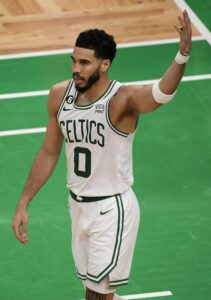 Boston Celtics (55.5 wins):
Boston Celtics (55.5 wins): 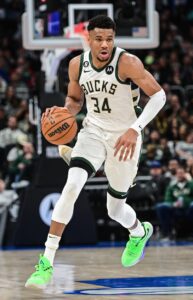 Milwaukee Bucks (54.5 wins): 76.9%
Milwaukee Bucks (54.5 wins): 76.9%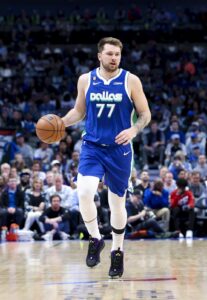 Dallas Mavericks (44.5 wins):
Dallas Mavericks (44.5 wins): 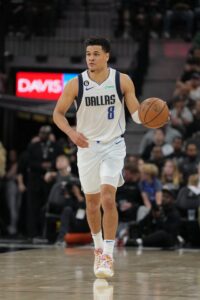
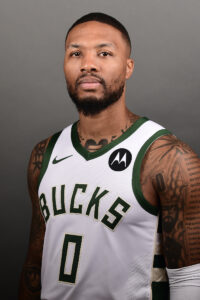 The biggest
The biggest